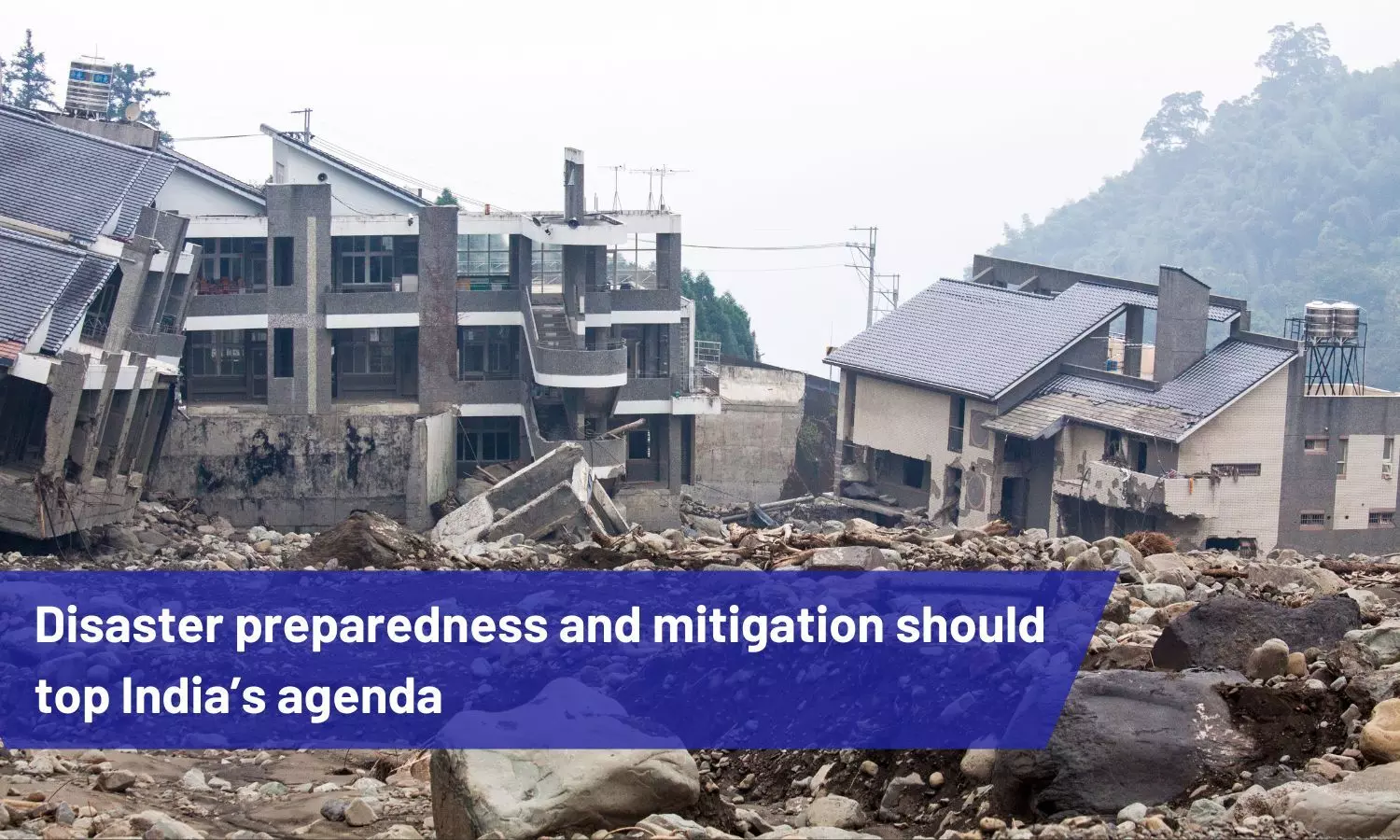Disaster preparedness and mitigation should top India’s agenda
Disaster preparedness and mitigation should top India’s agenda

The massive impact of cyclone Remal on the two Sunderbans (in Bangladesh and West Bengal) and their surroundings must come as a wake-up call for the authorities as regards our preparedness, disaster management and climate resilience. Disaster management mechanism and policies have undergone many changes over the years if one were to take 2001 as the cut-off year, while the earthquake in Kutch altered India’s response to disaster. The ancient city of Bhuj was flattened. This resulted in the belated creation of a hazard-risk and vulnerability atlas to assess dangers from earthquakes, tsunamis, floods, cyclones, droughts and chemical and industrial disasters.
The model served as a paradigm for building a national response to variegated calamities. However, the catastrophic cyclone Amphan and cyclone Remal have posed many scientifically valid questions—have we done all the right things? Have we faltered anywhere and if so, where? What needs to be done? What is the way forward? This could be debated further in the wake of the fact that the Sunderbans region has long been in a state of structural dysfunction, bringing great harm and impoverishment to millions, which is not a natural state or determined purely by fragile ecology.
Rather, they stem from policies, laws and institutions. Ironically, whenever a natural disaster strikes, ‘rebuilding’ the Sunderbans, the largest delta and mangrove forest on earth, comes to the spotlight. Lessons have not been learnt. The climate-stressed world continues to be battered by rising sea levels and cyclones. It ought to be noted that over 58.6 per cent of the landmass is prone to earthquakes; over 12 per cent of the land is prone to floods; nearly 5,700 km of the 7,516-km-long coastline to cyclones and tsunamis and 68 per cent of the cultivable area is vulnerable to droughts. Significantly, any form of disasters lead to enormous economic losses that are both immediate as well as long term. The immediate fall-out is that revenues from the affected region will be lower in the absence of regular economic activity, thereby resulting in loss of direct and indirect taxes.
In addition, unplanned budgetary allocation to disaster recovery can hamper development interventions and lead to unmet developmental targets. They could reduce availability of new investment, further constricting growth of the region. Besides, additional pressures may be imposed on finances through investments in relief and rehabilitation work. Those living in developing countries, and especially those with limited resources, tend to be more adversely affected. With the alarming rise in natural disasters and vulnerability per se, the world community is strengthening its efforts to cope with it. In case of India, the high population density, which in turn results in escalating losses, needs to be taken into count.
This factor sometimes tends to be as important as physical vulnerability attributed to geographical and infrastructure factors. Many parts of the sub-continent are susceptible to different types of disasters because of unique topographic and climatic characteristics. India is one of the most vulnerable regions in this regard. Given this, priority should be accorded to natural disaster management. Going beyond the routine focus on relief and rehabilitation after the event, India must look ahead and plan for disaster preparedness and mitigation so that impact of periodical future shocks is minimised.

